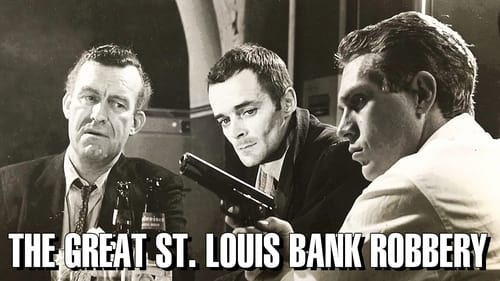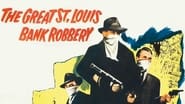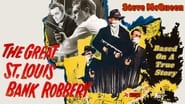UnowPriceless
hyped garbage
Console
best movie i've ever seen.
Pacionsbo
Absolutely Fantastic
William Frederick
This movie proves that acting can be learned ,if a person is given enough time. Molly and Steve would have embarrassed their acting coaches.The movie is almost painful to watch when you compare McQueens acting in this movie and then Tom Horn at the end of his career.There are comments about gay themes in this movie. I didn't get that idea although ,when the leader of the gang came into the bedroom of Steve and his uncle and they were in the same bed looking startled, it did run through my mind. Some of McQueens response to the police activity towards the end of the movie could be construed in this light. I must admit I didn't realize this theme till I read it in one of the reviews
deletewindowson
Plenty good ol' cars in this flick. Steve McQueen, a very well known car guy, is a would-be bank robber. He falls in with some hard cases and they all come to a bad end as a result of a botched robbery. The best laid plans, etc.Now, having read some of the other reviews, I have to wonder: where is all this "gay" stuff coming from? I didn't see anything like that. Maybe I'm just not apt to be jumping to conclusions. Maybe I don't have any "gaydar" at all. Whatever. I guess if you want to see homosexual stuff insinuated you will see it. Besides which, naw, I just can't see Steve McQueen appearing as a homosexual, especially back in the 50s when there was all kinds of approbation attached to that particular lifestyle.I'm not much of a Steve McQueen fan. I couldn't tell you if this was good acting or bad acting from him. He always seemed very.. low key. I guess some folks find that to be good acting. Me, not so much. I saw him as an action star not necessarily an actor. A star doesn't actually have to act much, just do action stuff, shootouts, car chases, punchups, making out with hot babes, etc. But acting? Naw.The best part of these lo-budg genre flicks is taking a tour around town back in the day. That's what this is about: St Louis in 1959 and a bunch of good ol' US iron rolling through the streets. If that ain't good enough for you, I guess you ain't gonna like this movie. Oh well. I liked it just fine.
wes-connors
Heralded, "This story is based on a true incident. Men of the Saint Louis Police Department play the same parts they did in the actual crime," which is one of the less interesting elements about this film. Directors Charles Guggenheim and John Stix' documentary-style approach is more interesting. And, an early Steve McQueen stars; although, obviously, this is before he found a feature film persona that worked. Trumping all in the interest department, however, is the homosexual relationships between the characters, both real and imagined.Mr. McQueen (as George Fowler) is a college drop-out, trying to lead the straight life. He is tempted into a life of crime, however, by ex-girlfriend Molly McCarthy (as Ann)'s brother David Clarke (as Gino). McQueen and Mr. Clarke have partnered up; but, the roommates have had a difficult time finding honest work. So, they involve themselves with a bank heist, masterminded by Crahan Denton (as John Eagan).The fifth wheel in the cast is getaway driver James Dukas (as Willie). Mr. Dukas gives the film's best performance; and, he has the most interesting role. Dukas began with head honcho Denton when he was a younger, thinner "kid", a fact Denton cruelly enjoys mentioning; and, the two obviously became lovers. They have a terrific bickering scene, which ends with Denton ordering Dukas, "Go take a bath, Willie." Denton wants the younger McQueen to drive his getaway car, which makes Dukas very jealous.Too bad that jukebox could only afford to play one record. With a bigger budget, "The Great St. Louis Bank Robbery" coulda been a contenda.
Tim O'Grady
Let me begin by pointing out that IMDb makes a mistake when it lists Nell Roberts as "Woman in Bar Talking to George." The woman in the bar is George's girlfriend Ann, played by Molly McCarthy. Nell Roberts is the Salvation Army woman who appears in three places in the film but who speaks only at the end when she tells a cop, "Don't go in. They're robbing the bank." I speak from authority as the great-nephew of Nell Roberts, my grandmother's sister, who was active in community theater in St. Louis in the 1950s, and who also had a bit role (as an old woman who answers the door) in the film, "Hoodlum Priest" (starring Don Murray), which was also made in St. Louis. We always knew her as "Aunt Nelly," so I guess "Nell" was her stage name.In any case, "The Great St. Louis Bank Robbery" is an interesting little movie -- though there really is nothing "great" about it. The noir approach fits the story line perfectly, but the execution strikes me as stiff and amateurish, especially in the acting and the editing. McQueen was doing what he could to be Brando, but Brando he wasn't. The three other members of the gang and the girlfriend have various small strengths as actors to commend them, but they wouldn't have been enough for professional survival today. The plethora of extras and bit players must have saved the producers some dinero, and they do give the film a certain documentary and amateur-theatrical charm, but their performances (including Aunt Nelly's) are of a type to make the viewer uncomfortable in the expectation of an embarrassing gaff. The homosexual subtext (mentioned by other reviewers) is certainly not imaginary. In fact, the things that make this movie most worth watching are, first, that homosexuality is included as a theme at all -- it was not necessary to the film's integrity unless the producers were aiming at some politically incorrect social commentary or had a personal ax to grind -- and, second, that the gay relationships had to be coded to make the finished work acceptable to the public in the late 1950s.But I did enjoy the look of the cars and the streets of St. Louis (a la New York in "The Naked City") before the rapid urban disintegration that overtook it shortly afterwards, and from which it has still not recovered. The was the REAL "St. Louis Bank Robbery."





